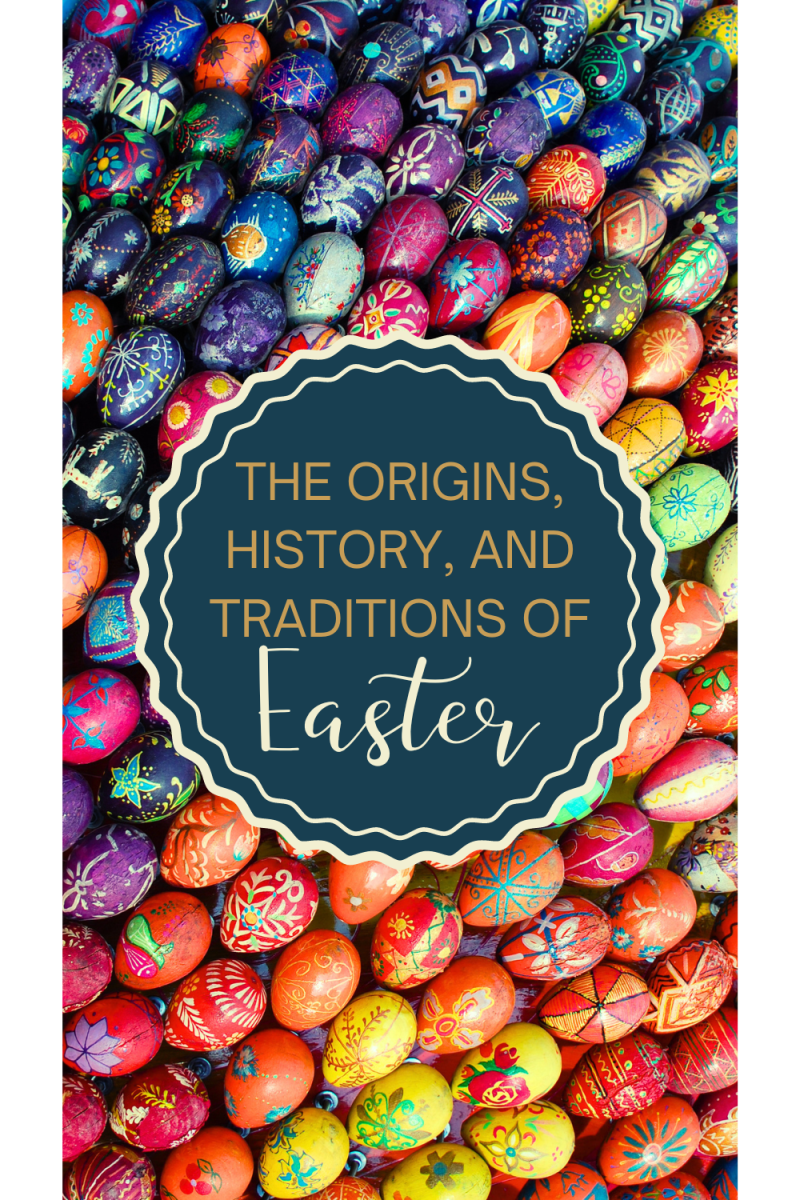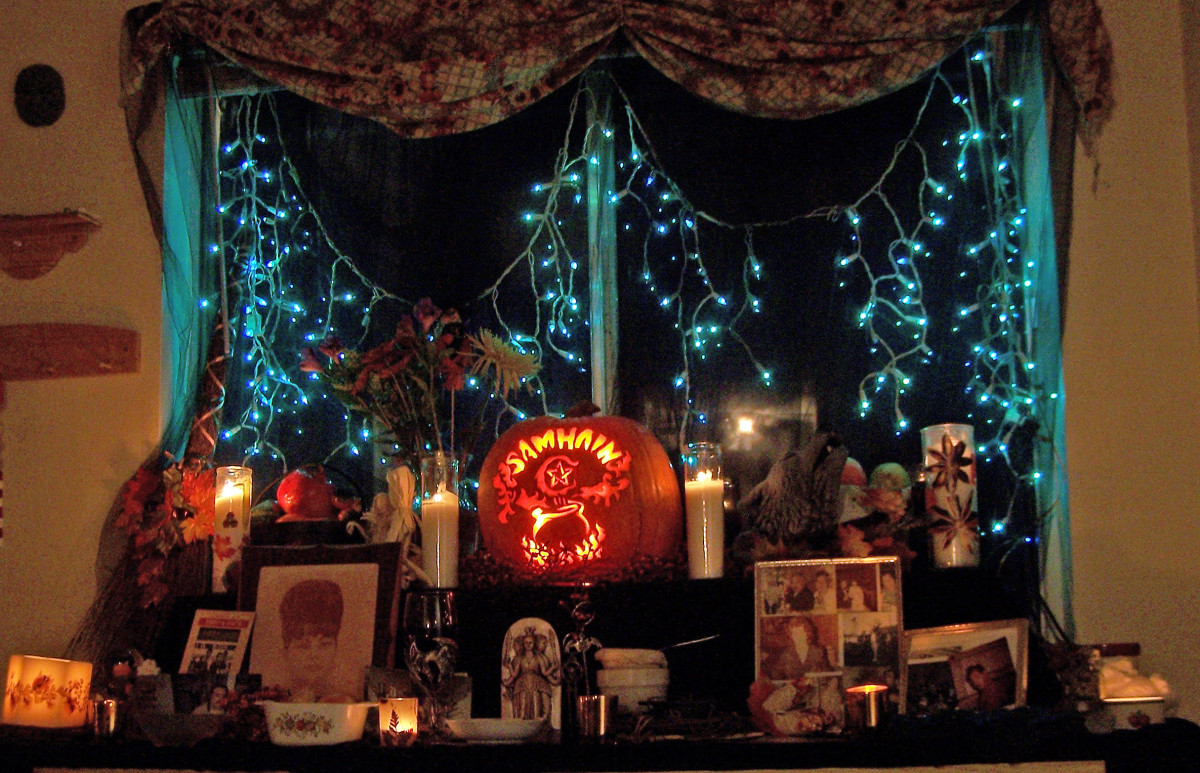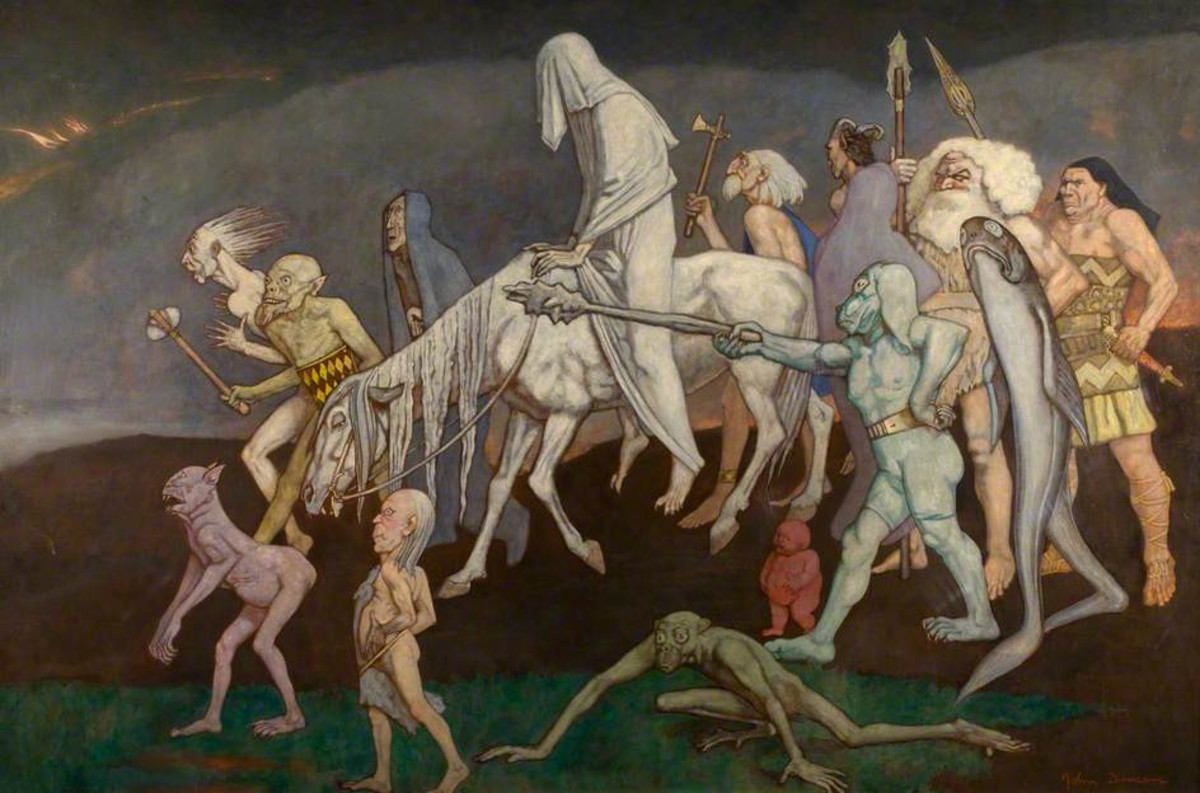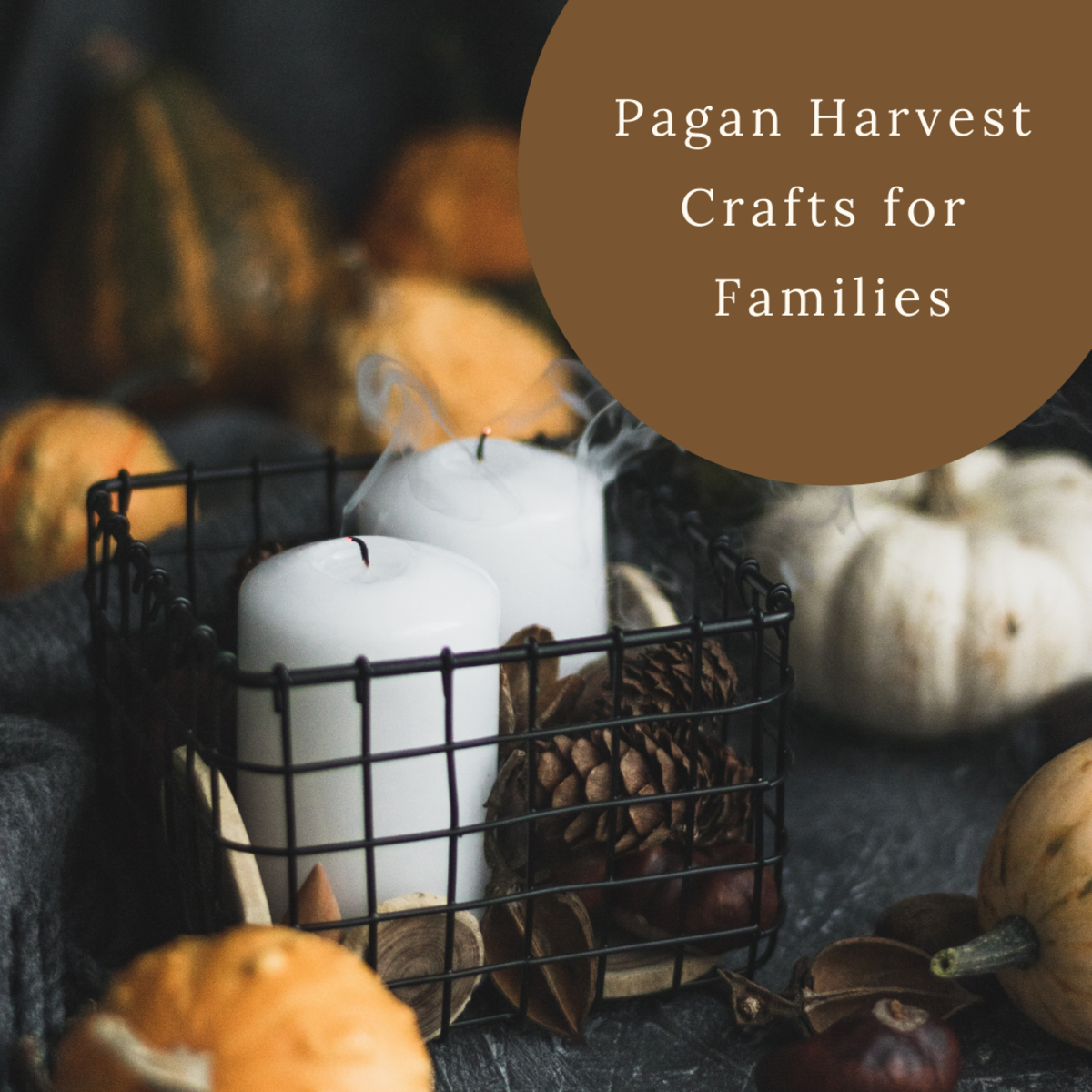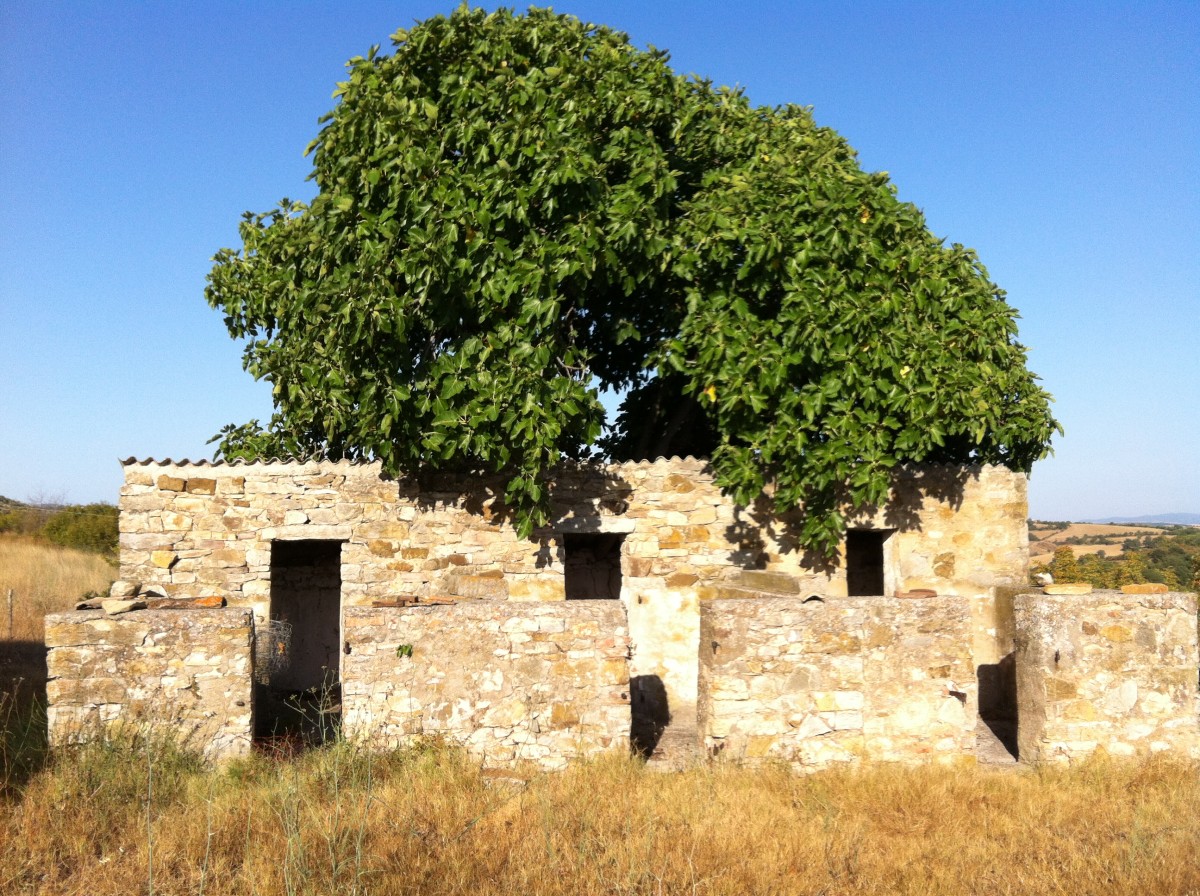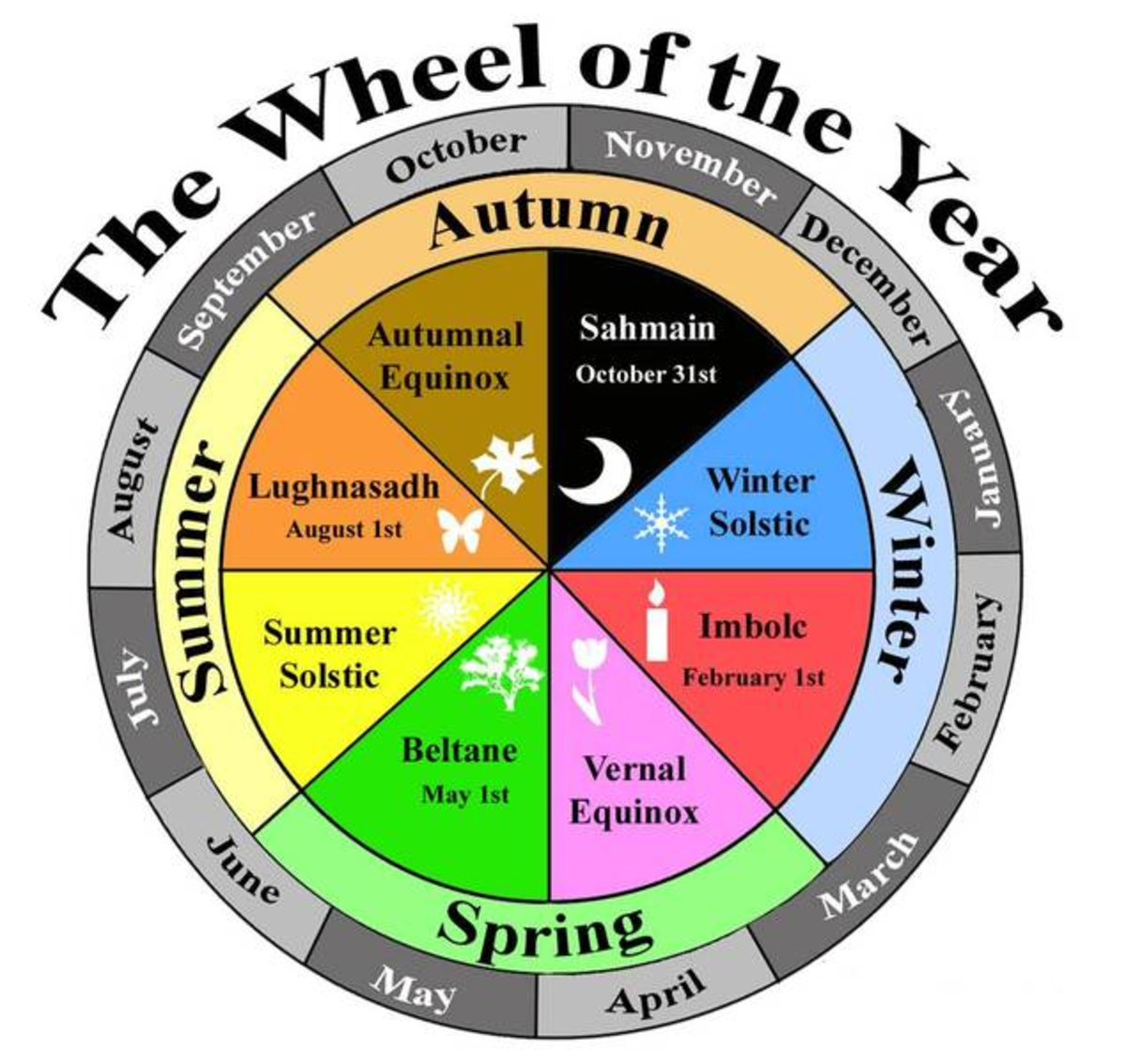From Harvest to Hearth: Traditions & Recipes for Samhain
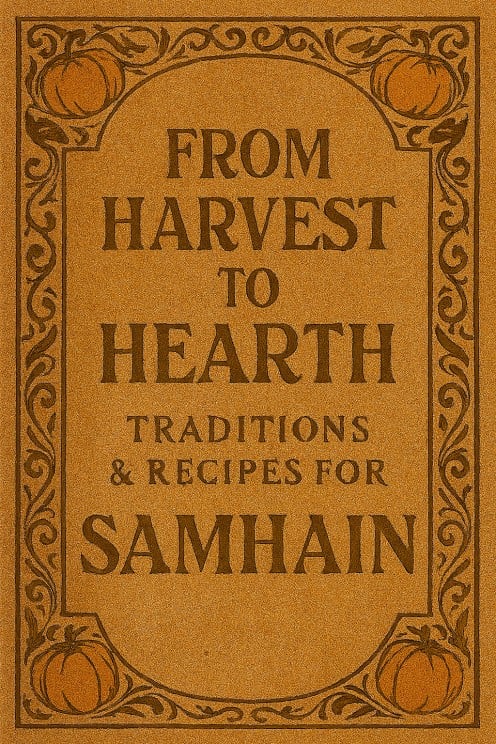
Samhain: A Sacred Feast of Shadows and Flame
As twilight spills across the land and the last golden leaves tumble like forgotten prayers, Samhain arrives—not merely as a date on the calendar, but as a liminal passage. It is the Celtic New Year, a time when the wheel turns inward, and the veil between worlds grows thin enough to whisper through. The air is thick with memory, mystery, and the scent of woodsmoke and apples.
Rooted in ancient Gaelic tradition, Samhain (pronounced Sow-en) marks the end of the harvest and the beginning of the dark half of the year. It is a festival of endings and beginnings, of death and rebirth, of honoring what has passed and preparing for what is to come. Unlike the glittering costumes and candy-coated chaos of modern Halloween, Samhain is a sacred observance—a quiet reckoning with the unseen, the ancestral, and the eternal.
This is the season of the crone, of the wise one who walks between worlds. It is a time to gather around the hearth, light candles for the departed, and listen for the stories carried on the wind. The ancients believed that during Samhain, the spirits of the dead could return to visit the living, and so they left offerings of food and drink, built altars of remembrance, and held Dumb Suppers—silent meals shared with those who had crossed the veil.
But Samhain is not only about mourning—it is also about magic. It is a time for divination, for dreamwork, for planting the seeds of transformation in the fertile soil of darkness. It invites us to shed old skins, release what no longer serves, and step into the mystery with reverence and courage.
Whether you celebrate with ritual, poetry, or a simple meal shared in candlelight, Samhain calls us to remember that we are part of a great cycle, woven into the fabric of time, and held by the wisdom of those who came before.
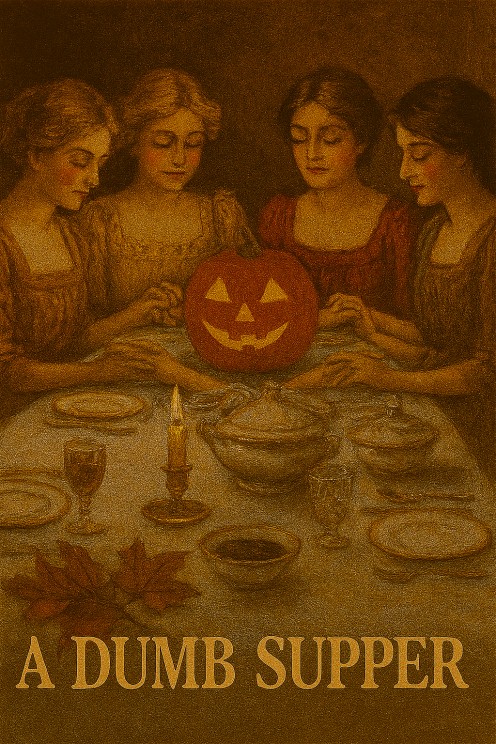
Dumb Supper Ritual Menu
Harvest Stew (Ancestor Offering)
A hearty, grounding dish that welcomes ancestral presence.
Ingredients
-
1 lb. stew meat (beef, lamb, chicken, or plant-based)
-
5 carrots, sliced
-
5 celery stalks, sliced
-
1 red onion, diced
-
½ cup corn kernels
-
2 cups potatoes, diced
-
Optional: parsnips, sweet potatoes, turnips
-
½ cup flour (or gluten-free alternative)
-
½ tsp onion powder
-
½ tsp garlic powder
-
3 tbsp olive oil
-
4 cups vegetable stock
-
Herbs: basil (protection), parsley (healing), rosemary (remembrance)
Instructions
-
Coat meat in flour and brown in olive oil.
-
Add vegetables (except potatoes), spices, and stock. Simmer 1 hour.
-
Add potatoes and cook 3–4 hours more, adding water if needed.
-
Serve with biscuits or dumplings.
Maman Brigitte Beet Salad (Symbolic Side)
Beets represent blood, vitality, and ancestral connection.
Ingredients
-
Roasted beets, sliced
-
Orange segments
-
Red onion, thinly sliced
-
Fresh mint or parsley
-
Olive oil, balsamic vinegar, salt
Roasted Pumpkin Seeds (Simple Snack)
A nod to the harvest and protective energy.
Ingredients
-
Pumpkin seeds
-
Olive oil
-
Chili powder, garlic powder, tamari
-
Salt to finish
Instructions Coat seeds in seasonings, bake at 350°F for 30 minutes, flipping halfway.
Soul Cakes (Sweet Offering) [Recipe Below]
Serve as dessert or altar offering. See your earlier recipe for a poetic twist.
Samhain-Spiced Baked Apples
Ingredients
-
4 large apples (Honeycrisp, Braeburn, or Granny Smith work well)
-
¼ cup chopped walnuts or pecans (symbol of ancestral wisdom)
-
¼ cup raisins or dried cranberries (for remembrance)
-
2 tbsp maple syrup or honey (for sweetness and offering)
-
1 tsp cinnamon
-
¼ tsp nutmeg
-
Pinch of ground cloves
-
1 tbsp butter, divided
-
Optional: splash of apple cider or bourbon for depth
-
Garnish: pomegranate seeds, edible flowers, or rosemary sprigs
Instructions
-
Preheat oven to 350°F (175°C).
-
Core apples, leaving the bottom intact to form a well.
-
Mix filling: nuts, dried fruit, maple syrup, spices, and half the butter.
-
Stuff apples with filling and place in a baking dish.
-
Add liquid: pour a splash of cider or water into the dish to keep apples moist.
-
Top each apple with a small pat of remaining butter.
-
Bake for 30–40 minutes until tender and fragrant.
-
Garnish with symbolic touches—pomegranate for the underworld, rosemary for remembrance.
Ritual Notes
-
Set the table with extra places for ancestors. Include candles, heirlooms, or photos.
-
Prepare and eat in silence. Let each bite be a prayer, each pause a space for presence.
-
Leave a portion of each dish as an offering.
The Deeper Meaning of Samhain: A Threshold Between Light and Shadow
Samhain is not just a seasonal marker—it is a spiritual hinge in the wheel of the year. Rooted in ancient Celtic tradition, it represents the death of the sun and the descent into darkness, a time when nature itself begins to slumber. But beneath its surface lies a profound invitation: to honor endings, embrace mystery, and commune with the unseen.
A Festival of Fire and Spirit
In Celtic lands, Samhain was one of the four great fire festivals, celebrated with bonfires that blazed against the encroaching night. These fires were not merely for warmth—they were ritual flames, meant to cleanse, protect, and guide wandering spirits. Communities would extinguish their hearths and relight them from the communal fire, symbolizing unity and renewal.
The Thinning Veil
Samhain is perhaps best known for its association with the veil between worlds. It was believed that during this time, the boundary between the physical and spiritual realms grew thin, allowing spirits of the dead to return. This wasn’t seen as frightening—it was sacred. Families would set places at the table for their ancestors, leave offerings of food, and light candles to guide them home. These rituals became the foundation for modern Halloween customs.
The Final Harvest
Agriculturally, Samhain marked the last harvest before winter. It was a time to gather what remained, store provisions, and prepare for the barren months ahead. Symbolically, it invites us to reflect on what we’ve cultivated in our own lives—what we’re ready to release, and what we’ll carry forward into the quiet of winter.
A Time of Divination and Transformation
With the veil thin and the world hushed, Samhain was also a powerful time for divination. The Celts would use runes, scrying, and other methods to seek guidance for the year ahead. It was a moment to ask questions of the universe, to listen for whispers from the Otherworld, and to plant seeds of transformation.
Embracing the Shadow
Samhain teaches us that darkness is not to be feared—it is to be honored. It is the realm of dreams, intuition, and the subconscious. It is where we meet our shadow selves, where we grieve, release, and begin again. In this way, Samhain is not an ending—it is a sacred pause before rebirth.
Nourishing the Soul at Samhain: A Sacred Invitation
To nourish the soul during Samhain is to feed more than the body—it’s to tend the unseen, the emotional, the ancestral, and the mythic. It’s about creating space for reflection, ritual, and reverence. In a world that often rushes past the sacred, Samhain invites us to pause, listen, and remember.
Nourishment Through Ritual
Rituals are soul food. Lighting a candle for a departed loved one, setting a place at the table for an ancestor, or whispering a name into the autumn wind—these acts nourish our connection to lineage and legacy. They remind us that we are part of an unbroken chain, woven into the tapestry of time.
-
Dumb Suppers, held in silence, allow us to commune with the dead.
-
Seasonal altars adorned with leaves, bones, apples, and fire become portals to memory.
-
Divination practices—tarot, runes, scrying—offer soul insight and spiritual nourishment.
Nourishment Through Food
Samhain feasts are more than meals—they’re offerings. Each dish carries symbolism: potatoes for grounding, apples for wisdom, bread for abundance. Sharing food with intention becomes a ritual of care, a way to honor both the living and the dead.
-
Baked apples, soul cakes [recipe below], and harvest soups are traditional foods meant to comfort and connect.
-
Meals can be shared in silence, with gratitude, or offered to the spirits as a gesture of remembrance.
Nourishment Through Reflection
Samhain is a mirror. It reflects what we’ve harvested emotionally, creatively, and spiritually—and what we must now release. To nourish the soul is to sit with grief, to honor transformation, and to make peace with the shadows.
-
Journaling, poetry, or storytelling can help process the year’s journey.
-
Creating art or music inspired by ancestors or seasonal themes channels emotion into beauty.
-
Meditation or quiet walks in nature allow the soul to breathe and listen.
Nourishment Through Connection
Whether through ancestral reverence, mythic storytelling, or seasonal symbolism, Samhain reminds us that we are never truly alone. We are surrounded by spirit, memory, and magic.
-
Speak the names of those who came before.
-
Share stories with loved ones.
-
Invite the unseen to your table—not with fear, but with love.
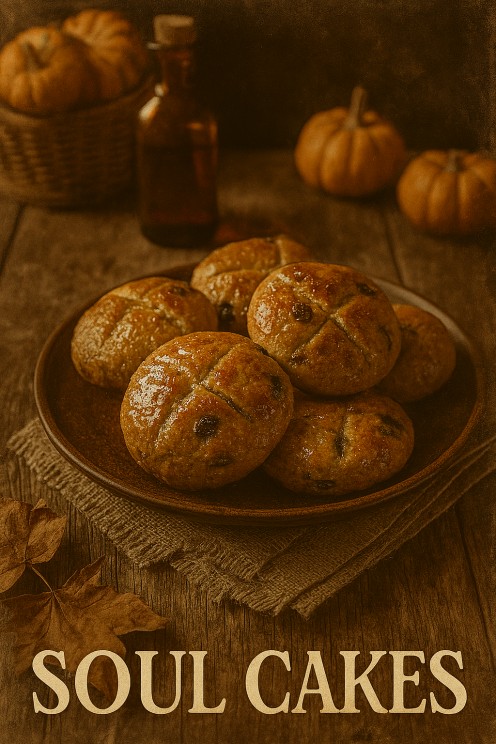
Orange-Spice Soul Cakes with Honey-Maple Glaze
Soul cakes are small, spiced cakes traditionally baked to honor the dead—especially during Samhain and All Souls’ Day. Their significance is layered with history, ritual, and remembrance.
What Is a Soul Cake?
-
A soul cake is a round, lightly sweetened cake, often flavored with spices like nutmeg and cinnamon, and marked with a cross on top.
-
They’re part scone, part biscuit, and sometimes studded with currants or raisins.
-
The cakes were typically given out during “souling,” a medieval British tradition where the poor would go door-to-door offering prayers for the dead in exchange for food.
Symbolic Significance
-
Spiritual Offering: Each cake was believed to help release a soul from purgatory or ease their journey in the afterlife.
-
Ancestor Remembrance: Families would leave soul cakes on altars or windowsills as offerings to wandering spirits during Samhain, when the veil between worlds was thinnest.
-
Origins of Trick-or-Treating: The practice of souling evolved into guising and eventually modern Halloween traditions. Children in costume would receive soul cakes to ward off mischief and honor the dead.
Why They Still Matter
Soul cakes are more than a seasonal treat—they’re edible rituals. They invite reflection, remembrance, and connection to ancestral wisdom. Whether baked for ceremony or shared in community, they carry the warmth of tradition and the sweetness of honoring those who came before.
These soul cakes are perfect for honoring ancestors, cozy gatherings, or simply savoring a moment of sweetness and spice.
Ingredients
Batter:
- 2 cups all-purpose flour
- ½ cup sugar
- 1 teaspoon cinnamon
- ½ teaspoon nutmeg
- ¼ teaspoon cloves
- ¼ teaspoon ginger
- Pinch of salt
- Zest of 1 orange
- ½ cup cold butter, cubed
- 1 egg
- ¼ cup milk
- ½ teaspoon vanilla extract
- ½ cup currants or raisins
Glaze:
- 2 tablespoons honey
- 1 tablespoon maple syrup
- 1 tablespoon butter
- Pinch of cinnamon
Instructions
- Preheat oven to 350°F (175°C). Line a baking sheet with parchment.
- Mix dry ingredients: In a large bowl, combine flour, sugar, spices, salt, and orange zest.
- Cut in butter until the mixture resembles coarse crumbs.
- Add currants, then stir in egg, milk, and vanilla until a soft dough forms.
- Roll out on a floured surface to ½ inch thick. Cut into rounds and score a cross on top.
- Bake for 15–18 minutes until golden.
- Make glaze: Melt honey, maple syrup, butter, and cinnamon in a saucepan.
- Brush warm cakes with glaze and let cool slightly before serving.
Final Thoughts
Samhain is not merely a holiday—it is a sacred threshold. A liminal breath between seasons, a hush between heartbeats. It is the moment when the veil thins and the world listens: to the rustle of memory, the echo of ancestors, the flicker of unseen presence.
Whether you gather in candlelit silence or feast with laughter and song, whether you bake soul cakes for wandering spirits or leave offerings at the door, let each gesture be a spell of remembrance. Let your rituals carry the weight of love, the shimmer of mystery, and the quiet courage to honor both endings and beginnings.
This is the season of descent and reflection, of harvesting wisdom and kindling inner fire. So, dress your altar with intention. Speak your gratitude aloud. And walk gently knowing that every step is a bridge between what was, what is, and what longs to be.
This content is accurate and true to the best of the author’s knowledge and is not meant to substitute for formal and individualized advice from a qualified professional.
© 2025 Erin K Stewart

